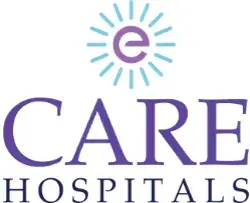Have you ever wondered how your heart keeps working tirelessly, even when it’s damaged or under stress? It works endlessly, pumping blood and keeping you alive, but its ability to heal itself is limited. The good news is that science is finding ways to help. Breakthroughs like stem cell therapy and bioengineered heart valves are creating new possibilities for treatment and recovery. These advancements are giving hope to millions living with heart conditions, offering better treatments and healthier lives. We spoke to Dr G Rama Subramanyam, Clinical Director and Senior Consultant, Cardiothoracic Surgery, CARE Hospitals, Banjara Hills, Hyderabad, who shared insights on the same.
The Heart's Natural Recovery Mechanisms
Unlike the liver, the heart has a limited ability to repair damaged tissues. “This is because the heart's muscle cells, called cardiomyocytes, don’t regenerate quickly. During a cardiac arrest, when oxygen supply is cut off, these cells die. Instead of growing back, they’re replaced by scar tissue, which doesn’t work like healthy heart muscle. This can weaken the heart’s ability to pump blood and make future complications more likely,” said Dr Subramanyam.
However, recent research has found that the heart has a small capacity to repair itself. Some areas, like the atrium, contain cardiac stem cells that can create new muscle cells, but only in very small amounts and usually not enough to fix severe damage. Still, this discovery opens the door for new treatments.
According to the University of Arizona Health Sciences, the heart muscle can regenerate after heart failure in some individuals with artificial hearts.
Advances in Supporting Heart Repair
Stem Cell Therapy
Regenerative medicine has made remarkable progress in improving healing capabilities and stem cell therapy is one such example. By placing stem cells into damaged heart tissue, it can help grow new heart muscle cells and blood vessels. Early studies have shown improvements in heart function and less scarring.
A review published in the Canadian Journal of Physiology and Pharmacolog, making them an effective measure for treating heart diseases and other health problems.
Bioengineered Valves
“New bioengineering techniques now allow doctors to create heart valves using a patient’s own cells. This reduces the risk of the body rejecting them. These valves are especially useful for children because they can adjust and change as the child grows, reducing the need for multiple surgeries,” said Dr Subramanyam.
A study published in Nature Communications in 2019 describes how scientists made tissue-engineered heart valves (hTESVs) using biodegradable materials and human cells. These valves resemble natural heart valves in structure and function. The study found that these valves can merge with the body’s tissues, hence offering a new hope for treating damaged heart valves.
Tissue Engineering and Bioprinting
“Scientists have developed special patches that can be attached to the heart to provide support and help it heal. With 3D bioprinting, they can now build detailed heart tissues, offering hope for personalised treatments and even the possibility of replacing whole organs in the future,” says Dr. Subramanyam.
Gene Therapy and Cellular Reprogramming
Gene therapy is working on reprogramming existing cells to act like stem cells, helping the heart repair itself. For example, turning scar-forming cells into healthy heart muscle cells could reduce scarring and improve heart function.
Immunomodulation
New treatments focus on improving the immune system to reduce inflammation and help with healing. This could prevent severe scarring and support the heart’s natural healing proces
Lifestyle and Medical Interventions
“It is important to note that new treatments offer hope, but it’s still important to live a healthy lifestyle and get the right medical care. Medicines like beta-blockers, ACE inhibitors, and statins can help reduce stress on the heart, control blood pressure, and prevent further damage. Cardiac rehabilitation, which includes exercise, healthy eating, and emotional support, can also greatly improve recovery and overall health,” explained Dr Subramanyam.
New technologies like wearable devices and AI-powered health monitors are also making a big difference. They can detect problems early, track health continuously, and help prevent serious issues by allowing timely action.
Looking to the Future
- Lab-Grown Cardiomyocytes: Scientists are now growing heart muscle cells (cardiomyocytes) in labs. This could lead to personalised treatments that replace damaged heart tissue, offering new hope for heart failure patients
- Integration of AI in Heart Research: Artificial intelligence is being used to predict outcomes, create tailored treatment plans, and speed up discoveries in heart repair. It also plays a key role in early diagnosis and helping patients recover faster.
- CRISPR and Genetic Engineering: Tools like CRISPR (Clustered Regularly Interspaced Short Palindromic Repeats) are being studied to fix genetic issues linked to heart disease. These advancements could boost the heart's ability to heal itself, making self-repairing hearts a real possibility in the future.
Bottomline
Dr Subramanyam concluded, “The heart's capacity to repair itself is a testament to the resilience of the human body. Although its natural healing is limited, medical advancements are closing the gap, bringing hope to millions with heart disease.”
Reference Link
https://www.onlymyhealth.com/can-the-heart-heal-itself-breakthroughs-in-cardiac-regeneration-12977823396
 HyderabadCARE Hospitals, Banjara Hills CARE Outpatient Centre, Banjara Hills CARE Hospitals, HITEC City CARE Hospitals, Nampally Gurunanak CARE Hospitals, Musheerabad CARE Hospitals Outpatient Centre, HITEC City CARE Hospitals, Malakpet
HyderabadCARE Hospitals, Banjara Hills CARE Outpatient Centre, Banjara Hills CARE Hospitals, HITEC City CARE Hospitals, Nampally Gurunanak CARE Hospitals, Musheerabad CARE Hospitals Outpatient Centre, HITEC City CARE Hospitals, Malakpet Raipur
Raipur
 Bhubaneswar
Bhubaneswar Visakhapatnam
Visakhapatnam
 Nagpur
Nagpur
 Indore
Indore
 Chh. Sambhajinagar
Chh. SambhajinagarClinics & Medical Centers

